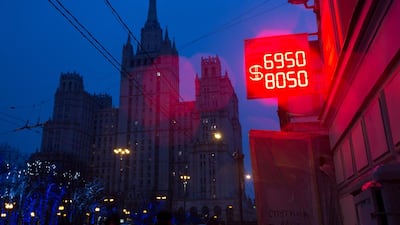1
“The clear winner for the most cited mathematical formula of 2014 is Thomas Piketty’s famous inequality: r > g,” said Nick Bunker, a researcher at economics think-tank the Washington Center for Equitable Growth, in December. Thomas Piketty’s book, released in English on April 15th, surfed the post-2008 zeitgeist to mass-market and critical acclaim, ending up on bestseller lists and bookshelves where it sat, frequently cited, frequently unread.
Piketty’s book – with its assertion that in the long run, r (the return on capital) is greater than g (the economic growth rate) – gave empirical heft to the long-held left-wing view that the concentration of wealth in a limited number of private hands is both widespread and socially iniquitous. Piketty plumbed fragmentary and disparate historical sources to mount a convincing empirical case that inequality mounted as the rate of return on wealth exceeded the growth rate during the Belle Époque (1870 – 1914); fell in the era of war and state interventions that followed; and began to grow in tandem with the rise of neoliberalism, and the hastening of globalisation, since the 1980s.
2
The US and EU announced a first round of economic sanctions against Russia on March 6, which were followed by further rounds in July and December. These restricted Russian access to capital markets, and hit Vladimir Putin’s inner circle. Sanctions and falling oil prices instigated a currency crisis, with the rouble hitting a record low of 80 roubles to the $1 on December 16.
3
May 21 saw the release of House of Debt, written by economists Atif Mian and Amir Sufi. They contend that an explosion of household indebtedness in the years up to 2008 left families struggling with unmanageable burdens when the crisis hit. This, and not the financial meltdown, kept consumer spending low in the years after 2008, depressing the economies of the US and Europe for years afterwards. Mian and Sufi’s prescription is for governments to tighten rules on lending to households, and offer widespread mortgage relief to foster recovery. These were not the aims of the 2010 Dodd-Frank Act, or the Basel III accords. Former treasury secretary Lawrence Summers called this “the most important economics book of the year”.
4
The euro-zone crisis continued to unravel, bringing the continent closer to disinflation as growth stagnated. On February 10, the German supreme court argued that the European Central Bank’s programme of buying the bonds of beleaguered European countries including Greece, Portugal, Italy, and Spain, violated the treaties of the European Union, but referred the case to the European Court of Justice to adjudicate. As the bond-buying programme has been widely credited with protecting these countries from default, the EU-level court case, which began on December 14, could severely limit the ECB’s policymaking armoury. The European Commission expects the Eurozone to have grown by just 0.8 per cent in 2014.
5
On August 22, Mario Draghi gave what, for a central banker, was a barnstorming speech at Jackson’s Hole, Wyoming, which hosts an annual shindig for the world’s monetary policy chiefs. The president of the ECB said that “all available instruments” would be used to combat disinflation, remarks widely interpreted to suggest that Mr Draghi would deploy quantitative easing if needed.
6
On October 2, as IMF chief Christine Lagarde told an audience at Georgetown University that the global economy faced an extended period of low growth, Mr Draghi announced a scheme to buy up asset-backed securities in the Eurozone in a bid to boost lending, but initial evidence suggested that its effect would be limited. Economists believe Mr Draghi will be forced to opt for quantitative easing in the new year – if he can surmount the legal and political obstacles.
7
Non-oil growth is set to total 6 per cent in the Gulf in 2014, the IMF said in October, while oil sector growth remains mostly static, as commodity prices slid to new lows. Outside of the Gulf, the IMF predicts average growth in the Middle East of just 0.5 per cent, as conflict in Iraq, Libya and Yemen outweighs small improvements in the governance of Egypt and Tunisia. Ministers from across the Gulf have been bullish about the impact of lower oil prices on public spending, with economists pointing to significant external reserves and mostly low break-even points. Nonetheless, talk of energy subsidy reform has increased in volume, with Gulf ministers, including, on April 30, Kuwaiti finance minister Anas Al Saleh, warning that cheap domestic utilities are unsustainable. Oil’s fall to below $65 per barrel on December 10, a five-year low, will likely focus regional policymakers’ minds on the need for energy subsidy reform.
8
While French economists such as Piketty are usually disdained by their American counterparts they have had a good year. Another Frenchman, Jean Tirole, scooped the Nobel Prize for Economics on October 14. Mr Tirole’s work on imperfect competition and the regulation of monopolies was a hit with the judges, who commended him for making real contributions to competition policy, and for overturning conventional wisdom along the way.
9
On October 29, the Federal Reserve ended asset purchases, bringing quantitative easing to a close, its balance sheet more than doubling to $4.48 trillion since November 2008. For the first time, the Fed’s governing board did not describe the slack in the economy as “significant” – interpreted by Kremlinologists as a sign that the Fed believes that the economy has turned a corner. US unemployment, a proxy for slack in the labour market, stood at 5.8 per cent in November, compared to its 2010 peak of 10 per cent. The IMF expects US growth of 2.8 per cent this year.
abouyamourn@thenational.ae
Follow The National's Business section on Follow The National's Business section on Twitter
abouyamourn@thenational.ae

